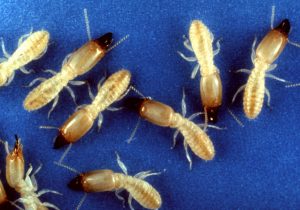 There are a wide variety of termites in the United States. However, in the southeastern portion, the majority of termites are the Eastern Subterranean termites. These termites have different characteristics than other termites. It helps to understand the termites and their habits.
There are a wide variety of termites in the United States. However, in the southeastern portion, the majority of termites are the Eastern Subterranean termites. These termites have different characteristics than other termites. It helps to understand the termites and their habits.These termites build their colonies underground through a system of tunnels. They rarely have the termite mounds, so it can be difficult to spot one in your yard. These tunnels can extend several feet from the primary nests and allow the works to go and find food and bring it back to the colony.
Eastern subterranean termites prefer to eat dead wood. This means they may be eating old trees or tree stumps on your property. They may also go after wood piles, which is why you should never stack a wood pile against your home. They will also eat the wood inside of your home.
Since they are eating the wood inside of your home and eating along the grain of the wood, you may not notice them right away. If you do notice damage it will be in long grooves that go with the grain. Other signs that they are in your home include the mud tubes that they build up the side of your foundation until they can reach the wood of your home. These tubes are about the width of a pencil and if you see them, you need to deal with termites right away.
Subterranean termite colonies will travel in search of more wood to eat. In addition to sending out winged termites to start new colonies, the entire colony will travel through tunnels to a new food source. Often the queen is carried by worker ants.
Termites are quite common in North Carolina and a study in 2008 showed that the average property in the state has about ten termite colonies in it. The key is to protect the termites from finding your home and making it their feeding ground. You can do this through several steps such as repairing leaky pipes, but the most effective thing is to monitor your property regularly and have a termite treatment if necessary.
Read How Can I Tell If I Have a Mouse or Rat?
No comments:
Post a Comment